= Orbea ciliata var. cristata (P.V.Heath)
[Basionim: Stapelia ciliata Thunb. var. cristata P.V.Heath 1993]
Accepted Scientific Name: Orbea ciliata (Thunb.) L.C.Leach
Kirkia 10(1): 291 1975
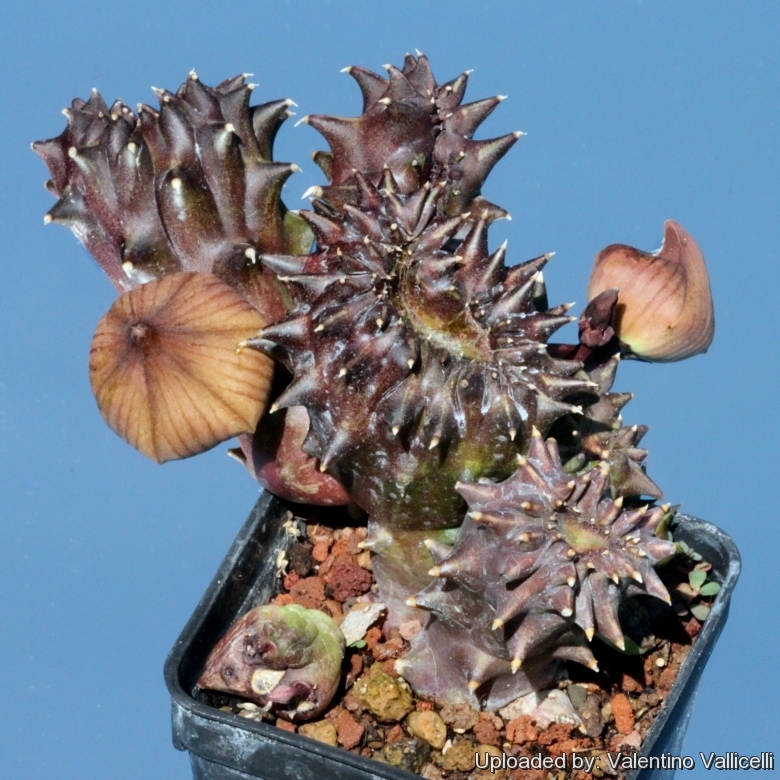
Stapelia ciliata var. cristata (Orbea ciliata var. cristata) Photo by: Valentino Vallicelli
Origin and Habitat: Cultivated (Locality not stated)
Synonyms:
See all synonyms of Orbea ciliata
back
Accepted name in llifle Database:Orbea ciliata (Thunb.) L.C.LeachKirkia 10(1): 291 1975Synonymy: 9
back
Common Names include:
ENGLISH: Starfish Stapelia, Near-white Starfish, Double Crown, Double Cup
Description: Orbea ciliataSN|23062]]SN|23062]] is one of the oldest known “stapelia” easily recogizable for the creamy-white flowers with a prominent fleshy cup or raised annulus which forms part of the corolla and for the clavate and strongly vibratile hairs which form a fringe along the edge of the corolla lobes. These hairs hardly remain still and move in the slightest breeze, possibly attracting insects. It is a prostrate-growing plant with branches rooting at the base.
Crested form: The odd crested form (Orbea ciliataSN|23062]]SN|23062]] var. cristata) is the most common form in cultivation with stem tips often funnel-shaped (cristate/monstruose) with cup-shaped depressions. In all other characteristics, namely size and shape, flowers, fruits, roots etc. it is very similar to the standard species.
Stems: Short, decumbent and ascending, and branching from the base 4-7 cm long, 12-18 mm thick, exclusive of the teeth, with monstrous tips funnel-shaped with cup-shaped depressions, more or less cristate; Teeth conical acute, divergent, 4-8 mm long. In a good light the stems become attractively dark purple-brown.
Flowers: Sub-solitary, up to about 7-10 cm across, bowl-shaped from near the base or middle of the stems with hardly any trace of the carrion odour characteristic of stapeliads. Pedicels 10-12 mm long, erect, glabrous; sepals about 6-8 mm long 2-4 mm wide, convex ovate or ovate-lanceolate, acute, glabrous. Corolla about 7,5 cm in diameter, pale-green stripped with reddish, smooth and glabrous outside, densely papillate-rugose on the innerface, greyish to pale yellowish, minutely dotted with red, raised at the mouth around the thick recurved rim of the inner tube, which is densely covered with stiff purple hairs at the base around and under the corona. Corolla lobes about 2,5 cm long, 2 sm broad, spreading, ovate, acute, more or less revolute, ciliate from base to apex with clavate strongly vibratile white hairs; Outer corona-lobes arising above the base of the staminal column, connate at the base, somewhat spreading, with the free part 2 mm long, transverse or subquadrate, very obtusely or subacutely bifid, glabrous, apparently yellowish dotted with purple-brown. Inner corona-lobes lying against the backs of the anthers, about 1,5 mm long, thick, ovate, acute, or acuminate with the tips produced into a very short erect point, apparently yellowish, dotted and marked with purple-brown without extended horns or wings.
More...Subspecies, varieties, forms and cultivars of plants belonging to the Orbea ciliata group
 Orbea ciliata (Thunb.) L.C.Leach: has creamy-white flowers with a raised annulusand strongly vibratile hairs which form a fringe along the edge of the corolla lobes. These hairs hardly remain still and move in the slightest breeze.
Orbea ciliata (Thunb.) L.C.Leach: has creamy-white flowers with a raised annulusand strongly vibratile hairs which form a fringe along the edge of the corolla lobes. These hairs hardly remain still and move in the slightest breeze. Orbea ciliata var. cristata (P.V.Heath): This is the most common form in cultivation with stem tips often funnel-shaped (cristate) with cup-shaped depressions.
Orbea ciliata var. cristata (P.V.Heath): This is the most common form in cultivation with stem tips often funnel-shaped (cristate) with cup-shaped depressions.
Bibliography: Major references and further lectures
1) Focke Albers und Ulli Meve (Hrsg.): “Sukkulenten-Lexikon" Volume 3 Asclepiadaceae” Ulmer, Stuttgart 2002
2) White & Sloane. “The Stapelieae” edn 2. Abbey San Encino Press, 1937
3) Golding, J.S. "Southern African Plant Red Data Lists." Southern African Botanical Diversity Network Report No. 14. SABONET. Pretoria. Page 162. (ed.) 2002
4) James Cullen, Sabina G. Knees, H. Suzanne Cubey “The European Garden Flora Flowering Plants: A Manual for the Identification of Plants Cultivated in Europe, Both Out-of-Doors and Under Glass” Cambridge University Press, 11/Aug/2011
5) Carl August Lückhoff “The stapelieae of Southern Africa” A. A. Balkema, 1952
6) Doreen Court “Succulent Flora of Southern Africa” A.A. Balkema, 2000
7) Hermann Jacobsen “A handbook of succulent plants: descriptions, synonyms, and cultural details for succulents other than Cactaceae" Blandford Press, 1960
8) Bruyns, P.V. "Stapeliads of Southern Africa and Madagascar" Volume I Umdaus Press, Hatfield, South Africa Pages 257 - 259 2005
More...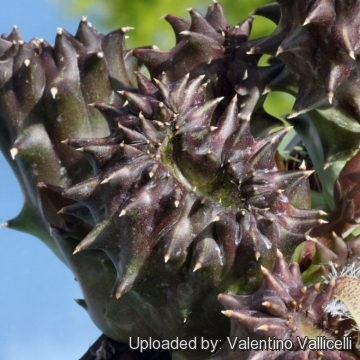 Stapelia ciliata var. cristata (Orbea ciliata var. cristata) Photo by: Valentino Vallicelli
Stapelia ciliata var. cristata (Orbea ciliata var. cristata) Photo by: Valentino Vallicelli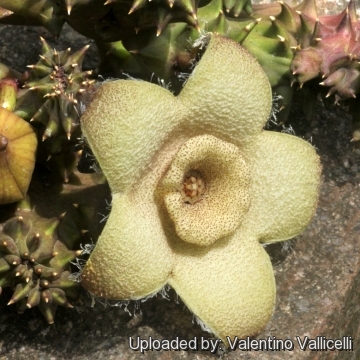 Stapelia ciliata var. cristata (Orbea ciliata var. cristata) Photo by: Valentino Vallicelli
Stapelia ciliata var. cristata (Orbea ciliata var. cristata) Photo by: Valentino Vallicelli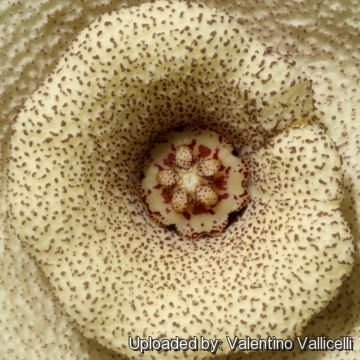 Stapelia ciliata var. cristata (Orbea ciliata var. cristata) Photo by: Valentino Vallicelli
Stapelia ciliata var. cristata (Orbea ciliata var. cristata) Photo by: Valentino Vallicelli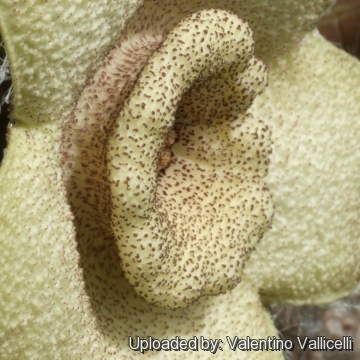 Stapelia ciliata var. cristata (Orbea ciliata var. cristata) Photo by: Valentino Vallicelli
Stapelia ciliata var. cristata (Orbea ciliata var. cristata) Photo by: Valentino Vallicelli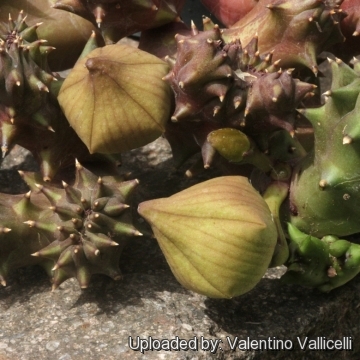 Stapelia ciliata var. cristata (Orbea ciliata var. cristata) Photo by: Valentino Vallicelli
Stapelia ciliata var. cristata (Orbea ciliata var. cristata) Photo by: Valentino Vallicelli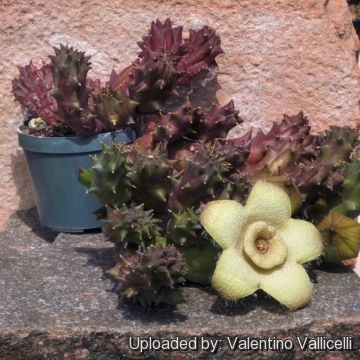 Stapelia ciliata var. cristata (Orbea ciliata var. cristata) Photo by: Valentino Vallicelli
Stapelia ciliata var. cristata (Orbea ciliata var. cristata) Photo by: Valentino Vallicelli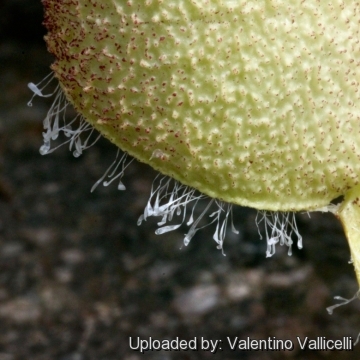 Stapelia ciliata var. cristata (Orbea ciliata var. cristata) Photo by: Valentino Vallicelli
Stapelia ciliata var. cristata (Orbea ciliata var. cristata) Photo by: Valentino VallicelliSend a photo of this plant.The gallery now contains thousands of pictures, however it is possible to do even more. We are, of course, seeking photos of species not yet shown in the gallery but not only that, we are also looking for better pictures than those already present.
Read More... Cultivation and Propagation: It is one of easiest species to grow but prone to root rot due to overwatering and lack of fresh air.
Potting medium: Since roots are quite shallow, use a gritty, very free-draining compost. Extra perlite or pumiceis suitable, and clay pots help the plants to dry out between watering.
Moisture: Water normally in the growing season, sparsely in the winter.
Spring: In the spring leaving them out in the rain may provide them with the water they need.
Summer: In the summer months they will grow well in full sun or partial shade and tolerate heavy rain, but will be just as happy if the season is dry.
Winter: It is usually recommended to over-winter them in warm conditions (at 10° C), but despite their African origins they seem to grow well and flower without the extra heat which one might have thought necessary, and occasional temperatures near 0°C (or less) are tolerated, if kept dry.
Note: Indoors only in brightest position.
Crested growth: Unlike 'monstrose' varieties of plants, where the variation from normal growth is due to genetic mutation, crested growth can occur on normal plants. Sometimes it's due to variances in light intensity, or damage, but generally the causes are unknown. A crested plant may have some areas growing normally, and a cresting plant that looks like a brain, may revert to normal growth for no apparent reason. Any normal shoots should be removed to promote the growth of the crest.
Pests & diseases: It is quite resistant to the “Balck spot” disease of Asclepiads.
Propagation: Propagation is done mainly from cuttings, but with uncertain results as the severed ends very rarely form a callus from where roots will eventually form.
More...

















